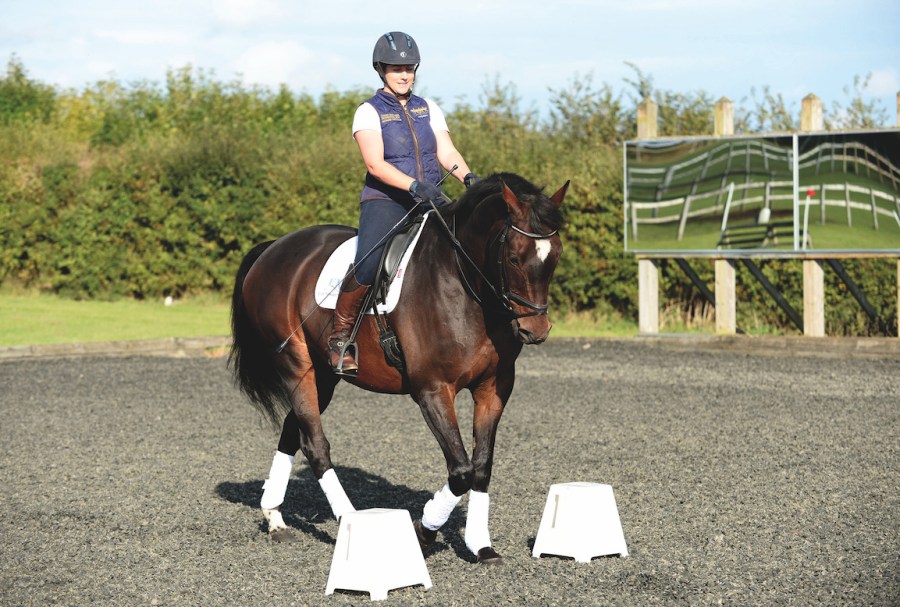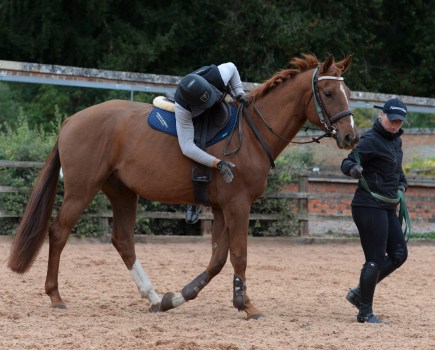Flatwork is an essential part of every horse’s training and should be regularly included in their exercise routine. Whether you compete in dressage or prefer to go jumping or love to hack, there are flatwork benefits for every horse and rider.
“Flatwork will give your horse or pony the foundations to help them be more obedient, attentive, responsive and flexible. This will undoubtedly make your horse much more enjoyable to ride regardless of your ambitions,” says List 2a dressage judge and trainer Sharon Butterworth.
We asked three pro riders about the benefits that flatwork has for every horse and rider, and this is what they said…
1 It helps your jumping
Many behavioural problems or jumping issues are caused by insufficient basic flatwork training and can be rectified by building regular schooling work into your horse’s exercise programme.
“Even the most basic dressage exercises will improve a horse’s performance over fences. Remember that 90% of a showjumping competition is performed on the flat,” says Sharon.
2 It improves strength and fitness
Schooling your horse regularly allows you to work on their strengths and weaknesses and helps to avoid any imbalances, which can lead to stiffness, tension or injury.
Ensure that your horse has plenty of variety in his workload and is not doing the same thing every day.
“Schooling for 20 minutes three times a week will have a big impact on your horse, and the more he cross-trains the better,” advises Sam York FBHS.
“The more a horse stretches, bends, hacks and jumps, the fitter and more agile he will be to cope with different terrain or to negotiate a gate. The more riders incorporate a range of activities into their exercise routine the healthier they are, and it’s the same with a horse.
3 It teaches good habits
“Be systematic with your training,” continues Sam. “Make sure you are riding equally on both reins and repeat a simple task until you have improved it and next time try something else.”
Italian event rider Vittoria Panizzon adds: “I believe it’s important to do the basics in the correct mode all the time, otherwise you are training the horse to use the wrong muscles and then trying to retrain them when riding in an arena, which is confusing for the horse.”
4 Setting mini goals gives a sense of achievement, even if you don’t compete
Making a plan and having mini goals can be a good way to approach your flatwork sessions and helps to avoid riders feeling lost and overwhelmed by being in an arena on their own.
“What might be a small goal for someone else could be a major goal for you, but it doesn’t matter,” says Sharon.
“Write down your goal for the month and then keep a record of what you do after each session so you can look back on it and see what you have achieved.”
5 You’ll learn what suits your horse best
All horses are individual. Some will perform better if they school for half an hour after a hack, while others will prefer a few days of schooling and then a few days’ break.
Try different approaches and find out what works for your horse — it will tell you a lot about him and really help improve your bond.
“Getting to know your horse and how he is each day really helps you bond and learn about each other,” says international British showjumper Yazmin Pinchen.
“I enjoy doing flatwork with my horses because every day we can be faced with a new challenge and we overcome it together. It’s very rewarding.”
6 It helps your position
Flatwork is not only beneficial for horses, but also essential for riders as it gives you time to concentrate on your position in the saddle and work on improving your balance, core stability, flexibility and fitness.
“When you are schooling, check that you are sitting straight in the saddle, have your weight evenly in both stirrups, and that your arms are relaxed and hands are in the right place,” says Vittoria Panizzon.
7 It develops a deeper seat
Regularly riding without stirrups is a great way to transform your riding and develop a deeper seat.
It doesn’t have to be done when you are in the arena; slipping your feet out of the stirrups for a few minutes when you are hacking off road works well too. Be sensible, though, and do this only when it is safe to do so.
“Taking your stirrups away will help your fitness and core strength. Flatwork can be more physically demanding than jumping, so don’t be surprised if you wake up sore and stiff the day after a schooling session,” advises Sam York.
8 It hones how well you use the aids, and how well your horse listens to them
Working on the flat also gives the rider a chance to practise their aids for movements such as leg-yield or shoulder-in, and it’s an opportunity to develop the relationship between horse and rider.
“Flatwork is the essence of communication and is key for a good relationship between horse and rider,” says Sam York.
“The more time you spend schooling the better you will get to know your horse and become aware of their strengths and weaknesses. Set up your phone to video you so you can watch yourself back and become more self-aware.”
Love hacking? Join our free #Hack1000Miles challenge and see how far you can go!
Subscribe to Your Horse Magazine – the perfect Christmas gift!









